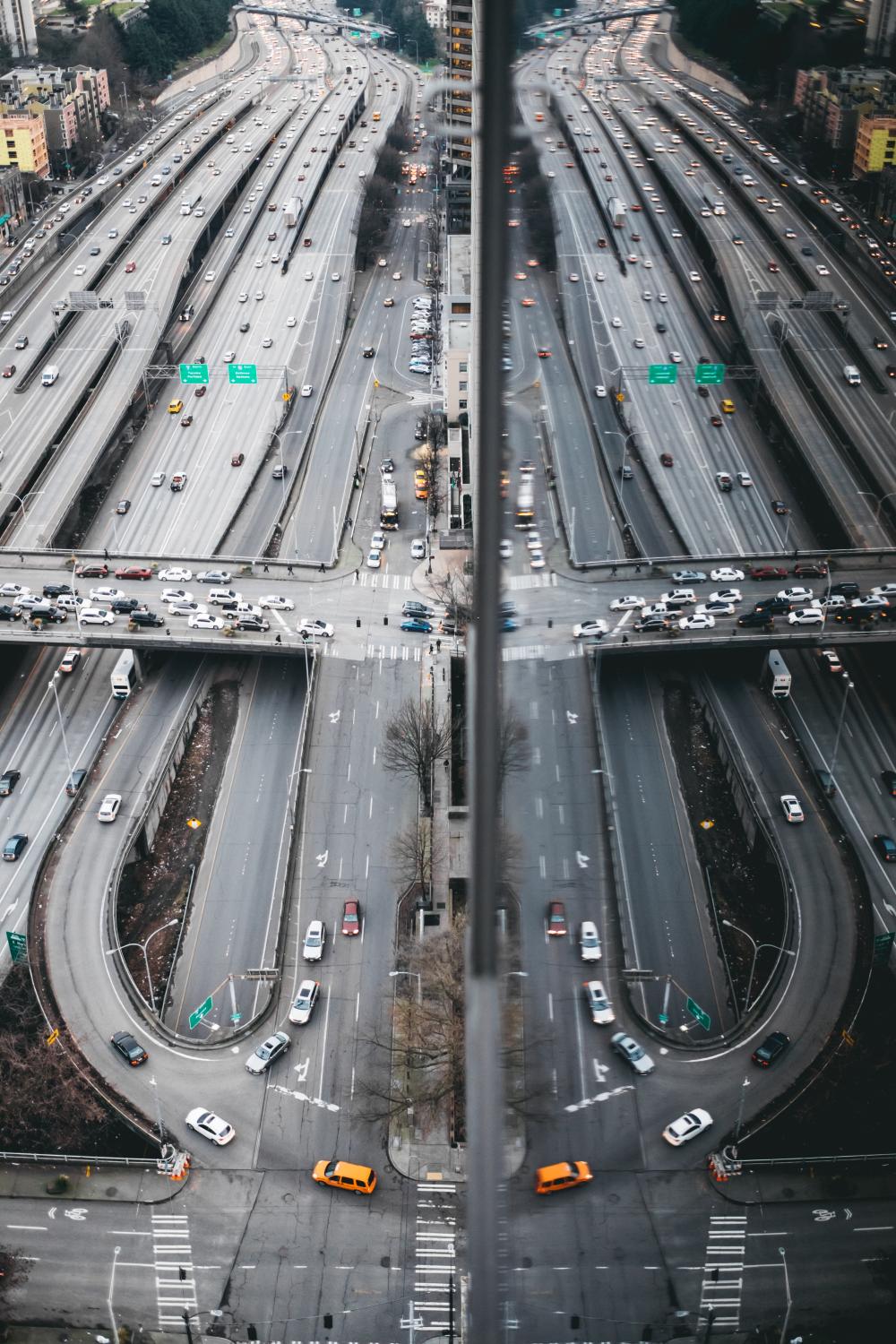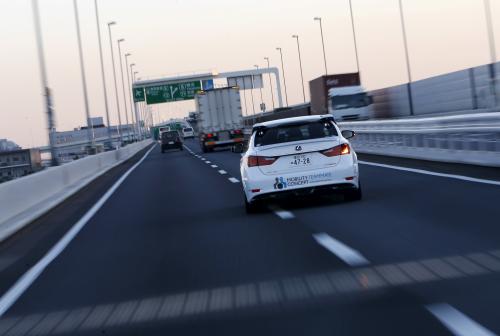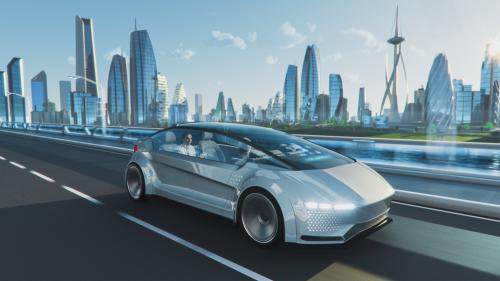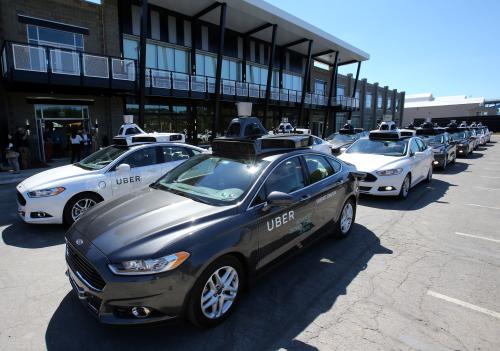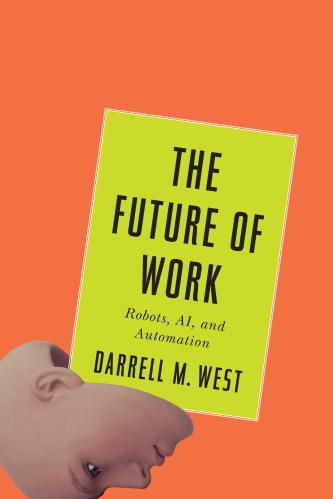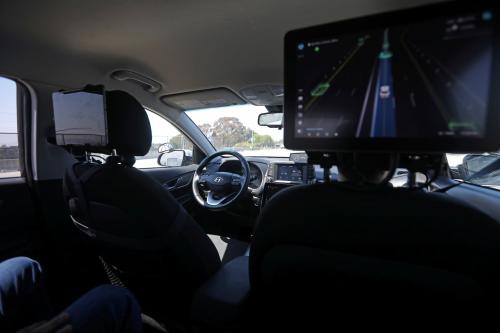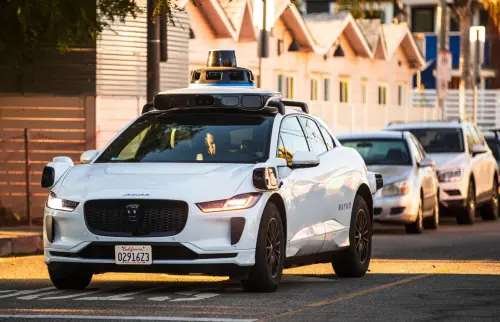Major changes are taking place in urban transportation and service delivery. There are shifts in car ownership, the development of ride-sharing services, investments in autonomous vehicles, the use of remote sensors for mobile applications, and changes in package and service delivery. New tools are being deployed to transport people, deliver products, and respond to a variety of metropolitan challenges.
Yet at the same time, these developments raise a number of questions concerning how to protect privacy, guarantee safety, manage data, and resolve liability issues. People worry that new advances will endanger important freedoms, threaten long-cherished human values, and expose people to concrete dangers.
In this paper, I examine the opportunities and risks of emerging transportation developments and make a number of recommendations for moving forward. In particular, I suggest infrastructure investments, technical standards, ride-sharing protections, oversight from the National Highway Traffic Safety Administration (NHTSA) and the Federal Aviation Authority (FAA), greater consistency across federal agencies, data usage and retention rules, and legal liability clarifications. Making progress in these areas would promote a safe and responsible future.
Emerging developments
There are a number of alterations taking place in urban transportation and service delivery. As outlined below, these developments are transforming the urban landscape as well as creating new ways of doing things for consumers, businesses, and governments.
Shifts in car ownership
For many decades, car ownership has been a staple for American consumers. People purchased vehicles as a means of transportation and tout their hard-earned economic status. Automobile manufacturing was a vital part of the economy, and car companies ran ads attributing all sorts of side-benefits to having personal transportation.
Yet patterns of car ownership have started to shift, especially among young people. According to MIT economists Christopher Knittel and Elizabeth Murphy, “Millennials own approximately 0.4 fewer vehicles per household than the average Baby Boomer.” Owing to the lingering economic effects of the Great Recession, movement to urban areas, the growth of rideshare options, and a variety of lifestyle choices, young people are less likely than their parents to own a vehicle. They see other options for moving from place to place, and do not want to bear the costs of buying, maintaining, and insuring an automobile. As this trend accelerates in coming years, it will transform the nature of urban life.
The rise of ride-sharing services
At the same time, urban ride-sharing services have become quite prevalent. According to a Lyft economic impact report, 75% of its users are under the age of 50, 51% are between 25 and 34, and 35% do not own a personal vehicle. In addition, 64% say having access to ride-sharing services influenced their choice not to purchase a car or truck. For these individuals, cities offer a range of transportation options—from ride-sharing possibilities to taxis, buses, and mass transit—that serve their interests more effectively than owning a personal vehicle.
Investments in autonomous vehicle technologies
Billions are being invested in autonomous vehicle technologies. According to a Brookings Institution study, over $80 billion was invested in the United States between 2014 and 2017. And since then, additional funding has come into the sector. In the first part of 2018, a CBS insights report found over $5 billion was invested in autonomous vehicle startups. This has fueled innovation in the sector and funded autonomous vehicle pilot-testing in major cities around the world.
Remote sensors and mobile applications
Mobile technology brings many digital features to users. When combined with remote sensors, these applications expand the kind of information available to people. As examples, some of the most persistent urban transportation problems involve parking and traffic congestion. It often is hard to find parking in major cities and rush-hour traffic jams are quite common.
However, advances in mobile applications help commuters deal with these problems. For example, there are apps that identify vacant spots in city parking garages. That real-time information means drivers don’t have to circle the block looking for open spots but can go immediately to the garage with available places. In addition, traffic applications monitor vehicular flows and tell motorists where streets are more or less busy, thereby helping to alleviate traffic congestion. Finally, mobile software allows people to rent out their own vehicles or access vehicles operated by companies. These options provide the freedom of personal transportation without having to buy a car itself.
Package delivery
American retailers and delivery services are investing in drone package delivery. The shift to automated delivery has arisen in part due to the high costs of home delivery. According to business estimates, 53% of delivery costs are spent on the last-mile alone. An ARK analysis shows leading firms could charge a dollar for 30-minute delivery and break even on infrastructure costs within a year.
UPS is also experimenting with electric delivery trucks and drone delivery. It has developed electric delivery trucks with helipads atop for drone takeoff and landing. This combination of drone and human delivery from each truck can greatly increase efficiency and limit the number of stops each driver has to make. Limiting the route of each of its 66,000 drivers by 1 mile per day could save the firm $50 million annually.
In 2019, UPS was awarded a license for drone delivery, thereby paving the way for a major service expansion. With this license, the company is allowed to transport packages weighing more than 55 pounds and fly at night. Its initial service will deliver to hospitals and health-care centers, but will eventually move to other sectors as well.
The German courier company, DHL, has experimented with unmanned delivery through its third-generation “Parcelcopter.” The delivery service notes this technology intends to assist in serving difficult-to-reach locations. Just like its counterparts elsewhere, DHL hopes that limiting last-mile delivery costs can increase company efficiency and productivity.
In Switzerland, delivery drones have taken on the task of transferring laboratory samples between hospitals. With the assistance of drones, Swiss Post tested this program and decreased transport time in flying over Lake Zurich to the city of Berne. For urgent medical situations where every second counts, this airborne service saves time. The transit of medical samples via drones has also increased the efficiency of health providers in congested urban areas.
Public safety and fire-fighting
The use of unmanned aerial systems to fight crime has been taking place for some time. For example, FBI agents have been using drones as part of their investigatory practice and already have deployed drones in criminal and national security cases. More recently, the use of drones by county police, municipal police, fire and EMS services, emergency management, and statewide agencies has grown substantially. A Goldman Sachs analysis anticipates a $100 billion market for drone-based fire-fighting in the United States by 2020.
“[T]he use of drones by county police, municipal police, fire and EMS services, emergency management, and statewide agencies has grown substantially.”
Unmanned aerial systems have been useful in recreating traffic collision scenes. Instead of having to manually measure and analyze aspects of car crashes, drones allow for 3D simulations that are created and analyzed very quickly. As an illustration, officers from an Illinois police department used this technology to uncover the cause of a fatal multivehicle collision. Similar 3D simulations have been used to develop accurate reconstructions of outdoor crime scenes from a point of view that otherwise would be inaccessible.
Drones play an important role in preventative police work and fire-fighting as well. This technology is especially useful in crowded urban areas where it is difficult to track down suspects. Drones can perform a quick flyover to survey particular areas and offer the benefits of being more difficult to spot and cheaper to use than a helicopter.
Other countries are making use of drones to assist police and fire-fighters as well. The deployment of drones by law enforcement agencies has increased the efficiency of many procedures, as well as performing novel tasks that were previously impossible. In Japan and South Korea, for example, law enforcement agencies are using drones to capture rogue flying objects. South Korea developed similar systems prior to its Winter Olympics in Pyeongchang to ensure a safe airspace at its events with large crowds.
In Lincolnshire, United Kingdom, local police were able to find a rape suspect via thermal drones that located bodies at night. The same police force also recently used this technology to identify a missing elderly man with dementia. In many countries, law enforcement agencies at local and national levels are investing in drones in order to help with a wide range of policing endeavors.
Disaster relief
Disaster relief is undergoing changes based on new digital products. Robots help with disaster assistance as well as search-and-rescue missions. The ability of unmanned aircraft to cover treacherous terrain in a short period of time saves lives. In addition, drones are useful in natural disasters. When Hurricane Harvey hit Houston in 2017, drones were deployed to survey neighborhoods and search for those who were stranded. That enabled relief providers to know who needed help and get supplies to relevant places. During California’s Camp Fire, an unmanned aerial system mapped the fire area in two days, thereby helping officials, homeowners, and insurance companies estimate the scope of the damage.
Risks of new models
The shifting nature of urban transportation and service delivery has raised a number of risks. At the same time there are possible benefits, there are considerable concerns about privacy, data usage, human safety, and legal liability. It is important to resolve these problems in order to move forward with emerging models.
Consumer privacy
Privacy is a widely acknowledged challenge in the digital space. In everything from ride-sharing systems to remote sensors to mobile applications to unmanned aerial systems, there are issues in terms of how the technology should be deployed and ways to protect consumer privacy and confidentiality.
With unmanned aerial systems in particular, there are fears regarding stalking, surveillance, business intelligence-gathering, and residential intrusions. Many localities do not have privacy provisions explicitly linked to drones, robots, or sensors. This has raised public concerns about how best to protect consumers and businesses. As of 2018, 26 states have enacted laws protecting privacy from unmanned systems, some applying to law enforcement and others to commercial firms.
Data usage
Data usage and cybersecurity represent another set of concerns in the digital era. Hacking ride-sharing services, intercepting remote sensor readings, or having unmanned systems that record videos need to be resolved. As an illustration, graduate students at Johns Hopkins University exploited the security flaws of commercial systems for a cybersecurity project, and showed how easy it is to gain control and cause failures in mobile systems. The ease of compromising devices puts people and organizations at serious risk and needs to be addressed as emerging products become more widespread.
Human safety
Safety issues arise when unmanned systems fail, autonomous vehicle or ride-sharing services result in accidents, or there are collisions in airspace. As an example, an Oregon State University study found that “drone operations have a higher potential for distraction in rural environments and when the drone operation is closer to the roadway.” Unless safeguards are imposed, it will be difficult to expand the use of new transportation models. People need reassurance that systems are safe and do not pose undue risks to consumers or bystanders.
Legal liability
As new digital systems emerge, there are questions concerning legal liability for things that go wrong. If there are accidents, for example, who is at fault? Is it the software, the hardware, a human operator, or some third-party provider? Or if a ride-sharing service generates a consumer harm, is the driver, the digital platform, or a third-party responsible?
“In the same way toy manufacturers are responsible for product harm inflicted on children, digital providers have to be cognizant of possible liability from their products and services.”
Products liability law covers many of the issues in this area. In the same way toy manufacturers are responsible for product harm inflicted on children, digital providers have to be cognizant of possible liability from their products and services. They should not be immune from legal damages when their hardware or software clearly are at fault.
Recommendations
In order to move forward, I recommend the adoption of a number of different steps related to governance, policy, and regulation. These actions include investing in digital infrastructure, providing technical standards, regulation of ride-sharing services, improving NHTSA and FAA oversight, greater consistency across federal agencies, data usage and retention rules, and clarifying legal liability. Progress in these areas would help the general public feel more comfortable with emerging models.
Infrastructure investment
In order to take advantage of new digital products and platforms, there needs to be infrastructure investment. This includes high-speed networks and connectivity in underrepresented areas. Ride-sharing services, remote sensors, and unmanned aerial systems require access to high-speed networks in order to operate effectively. They need mobile connections that link different products and enable consumers and businesses to take advantage of the latest advances. Ubiquitous access is necessary in order to connect people wanting to utilize new digital services, especially as the world moves toward higher-speed broadband.
This point is made clearly in a McKinsey report regarding autonomous-vehicle infrastructure. It notes that ride-sharing services, autonomous vehicles, and new digital services require several kinds of infrastructure enhancements. This list includes everything from better road maintenance, lane markings, and dynamic traffic signals to curb modifications and smart traffic signals.
Technical standards
Developing technical standards is one of the ways to deal with industrywide problems. When there are innovations, there is often a range of different challenges and no agreed-upon way to address them. That creates uncertainty within the sector and makes it hard for the sector as a whole to grow.
In response to those kinds of issues, standard-setting bodies deal with industrywide problems by bringing together technical experts to work with each other and government regulators on the best ways to design safe and reliable products. These meetings take place over a period of time and allow the specialists to work out agreed-upon solutions and get them implemented widely across the industry.
In 1884, for example, there were problems with the newly emerging technology of electricity. There were different forms of transmitting electricity based on AC or DC standards, and therefore disagreements over the best method of providing the service. To work on this issue, a group known as the Institute for Electrical and Electronics Engineers was formed and became one of the central organizations for setting standards in that area. Over the years, it expanded its expertise and played a major role in standards-setting for computer circuity, wireless connectivity, and robots, among other subjects.
Similarly, the National Institute of Standards and Technology was founded in 1901 to deal with critical infrastructure and key products. Its government experts work with people in private industry to develop common standards for the power grid, pipeline safety, computer chips, and rise-sharing services, among others.
“[Standard-setting organizations] make it possible for smart phones to operate in every part of the world, promote interoperability among products from different companies, and work to ensure consumer safety.”
Today, these and other standard-setting organizations deal with major concerns and address key problems in a number of different sectors. They make it possible for smart phones to operate in every part of the world, promote interoperability among products from different companies, and work to ensure consumer safety.
These bodies are vital in the transportation sector because of the range of products that need to be able to connect with each other. That is true with autonomous vehicles, ride-sharing services, and unmanned aerial systems. Each of these products operate in complex environments where they need to coordinate with other devices and avoid collisions. Standards-setting bodies can play a constructive role in helping companies deal with broad challenges and devise products that function effectively together.
Ride-sharing regulation
Cites are the major unit of government in charge of regulating ride-sharing services and some kinds of drone usage. With the local nature of many transportation services, it is up to urban officials to decide how to manage new products. Ride-sharing platforms compete with taxi companies, which as legacy systems, tend to be highly regulated. There are rules governing taxi ownership, personnel, taxes, and safety. As new systems, most ride-sharing services are not highly regulated. They do not require detailed criminal background checks via fingerprint checks and often rely on record-checking based mainly on Social Security numbers. That creates an uneven playing field between the different service providers and advantages digital over legacy businesses.
Government regulators need to be sensitive to the problem of different rules for different companies, depending on whether they are new or legacy products, and make sure there is a level playing field. It is not fair for one set of operators to have advantageous rules compared to other firms. Officials should ensure that all firms have the ability to innovate and not gain unfair advantages over their competitors.
National Highway Traffic Safety Administration oversight
There needs to be better guidance on how autonomous vehicles should be overseen. Much of the regulation takes place at the state and local level, but the federal government retains a significant role in regard to highway safety. Through NHTSA, there are national guidelines for how the states should issue licenses, set safety requirements, oversee software, and deal with autonomous vehicles. The agency’s goal is to balance innovation on the one hand with consumer protection on the other.
At the state level, jurisdictions vary considerably in their autonomous vehicle rules. California, for example, has enacted strong collision-reporting requirements and pilot-testing guidelines, and mandated steering wheels and brakes in autonomous vehicles, among other things. New York requires insurance coverage, state-police oversight, and state approval for local pilot tests. Texas, meanwhile, mandates compliance with traffic laws, having on-board video cameras, and specifying that manufacturers were liable for traffic violations. With so many different rules at the state and local level, it sometimes has been difficult for manufacturers to configure their vehicles. What is required in one state is not necessarily mandatory elsewhere.
Federal Aviation Authority oversight
The FAA has responsibility for many of the rules governing commercial and personal drones. Since 2016, Part 107 of Title 14 of the Code of Federal Regulations has been in place overseeing hobbyist and commercial drone activities. Its major provisions include the introduction of the visual-line-of-sight rule, a weight limit of 55 pounds, a constraint of use to daylight hours, a 400-foot altitude limit, a 100-mph speed limit, a minimum visibility of three miles, and restrictions in regard to flying over people in populated areas.
However, the FAA issues waivers for certain aspects of Part 107. As of 2018, there are 2,174 active waivers issued across the country to local law enforcement agencies, private companies, and individuals allowing them to overcome various restrictions. That gives agencies the ability to innovate and develop new products. Drones increasingly have the power to operate beyond the line-of-sight, expanding the use of commercial delivery systems.
If commercial drones are authorized on a more widespread basis, urban skies will be filled with buzzing drones, which will add to noise congestion. NASA performed a research project on the psychoacoustics of drones, and found many residents were annoyed with drone noise compared to the sounds of normal automobile traffic. In addition, many urban, suburban, and rural areas have limitations on the styles and heights of buildings and homes for the sole purpose of maintaining the view, and drones risk interfering with sight lines.
There also are safety and privacy issues that require a system to protect security and prevent crashes and mishaps. Unmanned Aircraft System Traffic Management, referred to as UTM, is in the works for managing the airspace where drones fly. In open airspaces, civilian drones are generally limited to 400 feet above ground and within the visual line-of-sight of the operator.
The FAA, several other federal agencies, and representatives from industry, are currently working to manage traffic of these unmanned aircrafts. Some key features that are to be included in a national UTM system are “airspace design, corridors, dynamic geofencing, severe weather and wind avoidance, congestion management, terrain avoidance, route planning and re-routing, separation management, sequencing and spacing, and contingency management.” Those features are designed to deal with possible collision and safety problems.
The general plan is to make the UTM landscape largely automated. Due to drones being autonomous, the ability of an air traffic control system to communicate with them is straight-forward. The system will allow drones to be tracked and exchange information with one another in real time. The drones themselves will need to be registered and equipped with the technology to communicate with the automated UTM in order to get approval to operate.
In order to control and monitor drone usage, the FAA is establishing procedures for commercial or government organizations to use drones for package delivery, traffic monitoring, or law enforcement purposes. In 2018, the FAA granted certification to several local governments to fly drones as part of the UAS Integration Pilot Program. By allowing these groups to go beyond the current restrictions, the FAA is opening up the airspace to a number of different usages. Companies must meet safe operating standards that do not interfere with personal privacy or human safety.
Greater consistency across federal agencies
One of the problems that slows innovation in smart transportation is a lack of consistency across federal agencies as well as between state and federal authorities. Many departments have their own particular rules and procurement procedures, and it is difficult for outside firms to figure out how to navigate the internal processes. That limits the ability to improve the way both state and federal agencies operate.
Standardizing procurement would help deal with this problem. Improving inter-agency coordination also would be beneficial. Anything that helps agencies learn from the experiences of other departments (and states) would improve public-sector performance and bring agencies closer to the cutting-edge of innovation.
Data management and retention rules
Privacy is a major concern for many aspects of digital life, but it is especially the case in regard to law enforcement. Police forces are innovating in a number of ways, but the use of drones, robots, and sensors comes with potential threats to personal privacy.
In order to maintain trust, law enforcement should use third-party audits when deploying their unmanned aerial systems. By developing a system for external experts to review unmanned systems, we can encourage confidence in their practices and provide best practice guidelines for the deployment of new technologies.
In addition, a time limit on maintaining personal information is necessary. The actual limit likely would depend on the particular application and sensitivity of the data. But for information compiled to deal with imminent threats, time storage should be limited because once the threat has passed, there is little reason to retain the material.
For a number of years, Sen. Ed Markey (D-Mass.) has introduced the “Drone Aircraft Privacy and Transparency Act,” which is designed to protect personal privacy. If enacted, it would require operators to write “a data collection statement that explains who will operate the drone, where the drone will be flown, what kind of data will be collected, how that data will be used, whether the information will be sold to third parties, and the period for which the information will be retained.” If ever enacted, those rules would help protect the confidentiality of individuals’ information.
Legal liability for consumer damages
It is important to clarify rules on legal liability for consumer damages arising from new transportation models. Right now, there is some uncertainty in products liability law over who is responsible for possible harms: the hardware, the software, the manufacturer, the operator, or a third-party organization. That situation can be remedied either through legislative action or the development of legal case law that clarifies lines of responsibility in a digital world.
Another way to mitigate harms during the transition to new models is through insurance products designed to protect people and businesses against potential liabilities. Insurance represents a traditional avenue to deal with risk. People come together in risk pools to share risks and protect themselves against major accidents. That is a way to share the risks and defuse catastrophic developments.
In the short run, with limited data and few detailed actuarial studies, it will be hard for new digital insurance products to estimate costs and develop risk pools. It will be challenging to understand the actual costs of consumer harms, mid-air accidents, data breaches, or privacy losses. But well-formatted plans that cover such risks would help people manage potential problems and offer protection as new transportation products are deployed.
The need for urban redesign
There are a number of digital products that are transforming urban transportation and service delivery. There is considerable experimentation in terms of autonomous vehicles, ride-sharing services, remote sensors, package delivery, and urban services. As new models unfold, cities will need to redesign their overall space to incorporate public uses, road changes, mass transit, and package delivery protocols.
“As new [smart-transportation] models unfold, cities will need to redesign their overall space to incorporate public uses, road changes, mass transit, and package delivery protocols.”
Right now, most urban areas are designed around streets and parking places. Under this model, personal cars are the primary means of transportation. As long has been the case, officials have assumed moving people around in their own vehicles is the top local transportation priority.
Moving into the future, though, that is not likely to be the case. There will be a blend of personal vehicles, ride-sharing services, mass transit, and autonomous vehicles. AI-based systems will coordinate traffic and ease vehicular flows. In this situation, there will be a greater need for curb cutouts and drop-off points for ride-sharing services and a decreased need for personal parking. Some cities already are converting unneeded parking lots and garages to other purposes, such as community spaces, e-commerce delivery, or food delivery areas. That is exactly the kind of repurposing that will be needed on a larger scale as new developments unfold.
There are several steps that would improve the ability to gain benefits from these systems, from infrastructure investment and technical standards to privacy protections and data management rules. Thinking about urban redesign and adopting these steps will strengthen public confidence and make people feel better about the future of urban transportation.
Note: The author would like to thank Raj Gambhir, Amritha Jayanti, Marla Odell, and Julia Slisz for research assistance on this project.
The Brookings Institution is a nonprofit organization devoted to independent research and policy solutions. Its mission is to conduct high-quality, independent research, and based on that research, to provide innovative, practical recommendations for policymakers and the public. The conclusions and recommendations of any Brookings publication are solely those of its author(s), and do not reflect the views of the Institution, its management, or its scholars.
The findings, interpretations, and conclusions in this report are not influenced by any donation. Brookings recognizes that the value it provides is in its absolute commitment to quality, independence, and impact. Activities supported by its donors reflect this commitment.
The Brookings Institution is committed to quality, independence, and impact.
We are supported by a diverse array of funders. In line with our values and policies, each Brookings publication represents the sole views of its author(s).

